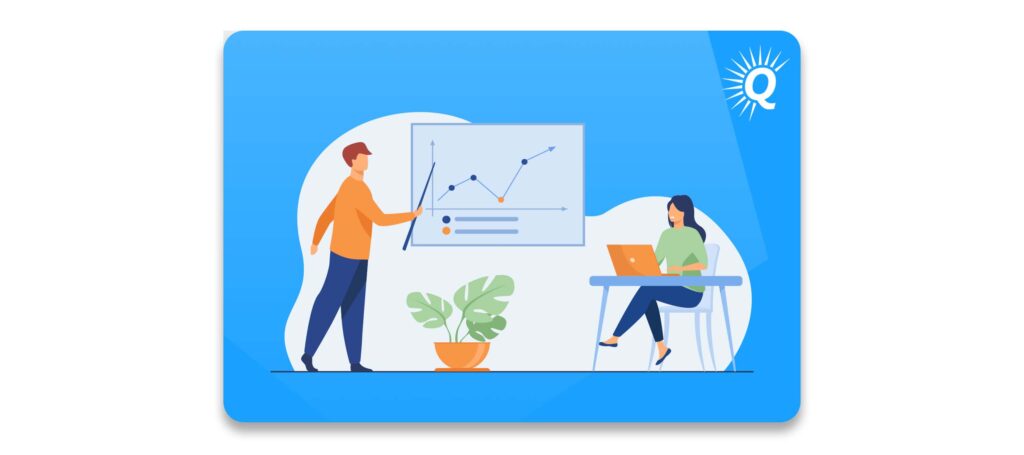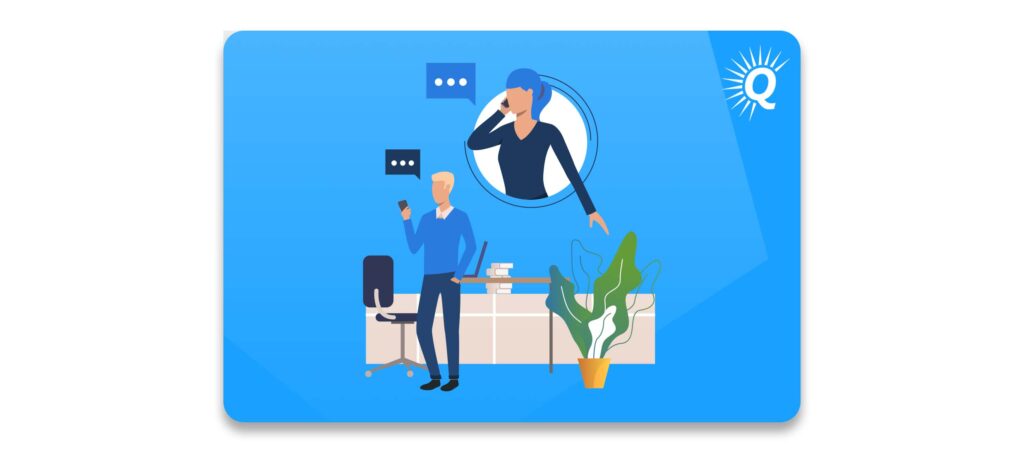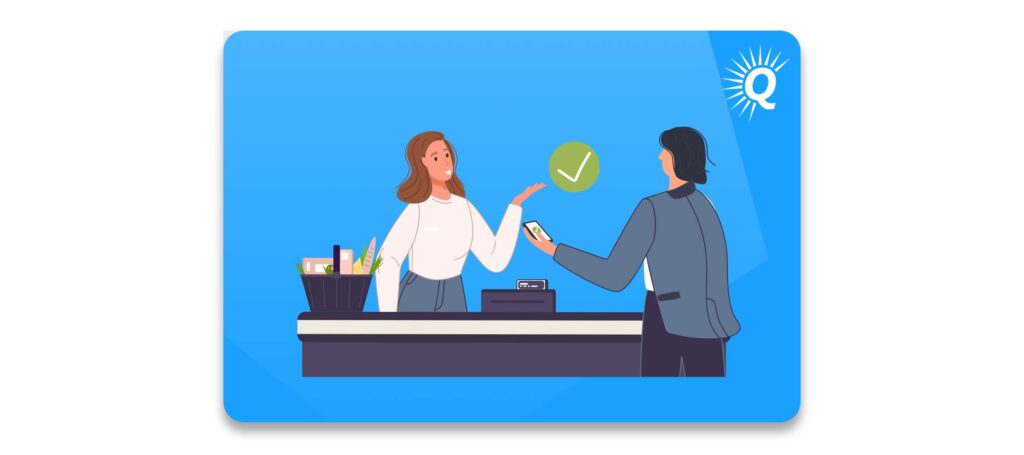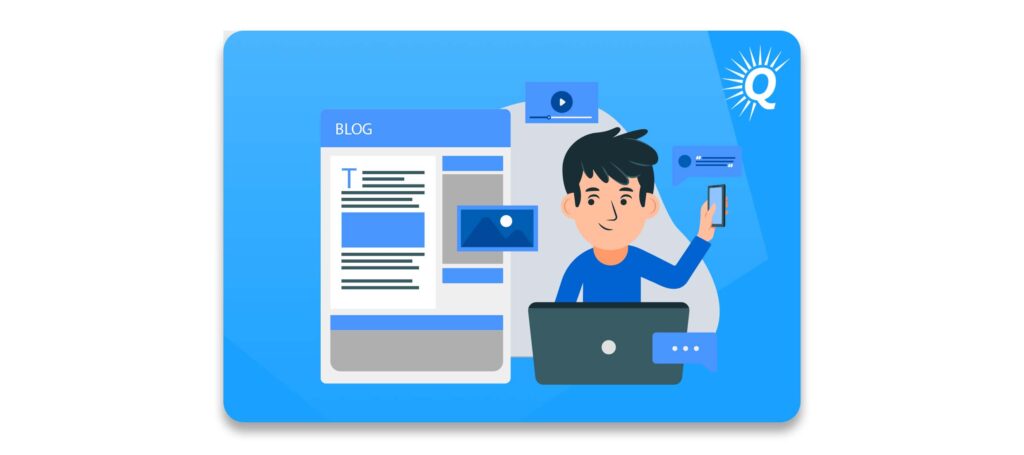Topics:
Never Miss a Beat - Get Updates Direct to Your Inbox
FILTER:


Thinking of Selling Your Blog? Here’s What You Need to Know
By Quiet Light
Selling your blog can be a great way to achieve both your personal and financial goals. But how exactly do you go about the process of selling your blog? And how can you ensure that things go smoothly for everyone involved—for you, the buyer, and your blog readers?
Maybe you’re ready to shift gears and write about a totally different niche. Or, you might want to pursue a new business opportunity and you need to sell your blog to free up liquid capital.
Regardless of the “why” that’s driving your interest in selling, this article will teach you everything you need to know about the process, including:
- How to determine your blog’s value
- Four ways to maximize your blog’s value before going to market
- What you should do to prepare your business for sale
Related Articles:
12 Steps to Maximize the Value of Your Blog Before Selling It
Blog Valuation For Business Owners


What Is Your Blog Worth?
The first step in selling your blog or content site is figuring out exactly how much your site is worth.
First let’s take a look at valuation methods. Then, we’ll dive deeper into factors that can impact the value of your blog.
Valuing your blog with the SDE Method
Because your content site is an online business, you can usually use the SDE multiple method to value your blog. There are two key components of the SDE valuing method: the SDE and the multiple.
SDE stands for seller’s discretionary earnings—the pre-interest and pretax profits your blog or content site makes before you consider noncash expenses, one-time investments, owner benefits, and any unrelated discretionary expenses or income. In other words, SDE is the total amount of money your blog generates for a single owner.
After you know what your SDE is, you multiply that number by the multiple. So if your blog generates $125,000 in SDE and is valued at a 3x multiple, it’s worth $375,000 ($125,000 x 3 = $375,000).
When you’re selling your blog, you might choose to work with a qualified business broker. When you go through the valuation process with Quiet Light, a knowledgeable business broker looks at every aspect of your website to determine how your blog lines up with our Four Pillars of Value. These pillars are:
- Growth
- Risk
- Transferability
- Documentation
Working with a business broker can ensure you calculate your SDE accurately and land on a purchase price that honors the time and energy you’ve invested in building your blog.
Brokers can also help identify opportunities to grow the value of your blog. Past and current growth trends in your blog have an impact on how prospective buyers perceive its value. Discovering new ways to grow your website can lead to a higher sales price in the future.
Pageviews and visitor metrics
As a blogger, you know that page views and website analytics are crucial. You can pour time and energy into writing a blog post on your personal finance blog. But if no one is reading your posts about budgeting tips, your blog won’t be valuable to a buyer. When a buyer is browsing blogs for sale, pageviews are one of the top metrics that they’re looking at.
In addition to the pageview numbers, buyers are also interested in growth trends. Do you have a steady increase in readers? Or are you wanting to sell your blog because readership is decreasing? Buyers are interested in purchasing blogs that are steadily increasing in pageviews and readership.
Another thing to consider is how your blog’s search rankings. Do you have a content strategy that is making consistent progress? Have you met goals for keywords consistently? Buyers want to invest in websites that have a clear content strategy that helps them reach a target audience.
Marketing and branding
What is the reader experience when someone visits your blog? For example, maybe you’ve spent time building a food blog. Is it easy to find specific recipes? What if a visitor wants to browse through all of your recipes for vegetarians? Do you include a “jump to recipe” button for quick reader access—or does someone have to spend time scrolling through the page to find out how long to cook asparagus?
Blogs that are well designed, visually appealing, and intuitive to navigate are interesting to both blog browsers and buyers.
In addition to blog design, your email list also impacts the value of your blog. Buyers want to see a subscriber list that is growing steadily. Maybe you only use your email marketing list to communicate with readers when you have a new blog post. But buyers see a thriving email marketing list as growth potential. It’s ripe with customers who are engaged and interested in what you have to say.


Your blog might offer paid memberships—maybe members unlock content or can participate in digital conversation and community. If that total number of members is growing month over month, your blog is going to be worth more. That’s true whether you’re writing about food, finance, or just about any other profitable niche topic.
Social media presence
In addition to the content that you have on your blog, your website value is also impacted by your social media presence. If you have a strong following on social media platforms like Facebook, Instagram, Twitter, and Tik-Tok, it’s much more attractive to advertisers, sponsors, and potential buyers.
Take the time to look at your social media metrics. A strong social media presence shows an interested buyer that they can reach a wide (and engaged!) audience quickly.
Revenue diversification
How do you make money blogging? How your blog generates revenue is another factor that impacts how much your blog is worth.
Let’s say that you blog about technology trends and the one major source of revenue for your blog is through affiliate links. You might use the Amazon affiliate program to link to your recommended phones and laptops. Even if you generate a major source of income through your affiliate links, buyers will see the lack of revenue diversification as a risk.
Buyers find more value in a blog with a wide range of income sources. This might include advertisements, sponsored content, affiliate marketing, digital or physical products, and memberships or subscriptions.


Why Focus on Growing Your Blog Value When You’re Thinking About Selling?
Using the SDE Multiple Method and spending time learning about your blog analytics can help you calculate your current website value. But now is also a great time to think about what you can do to grow those numbers.
Bloggers and content creators who work on boosting their website value can see many benefits—both now and in the future! Some of those benefits include:
- Increasing your earnings potential
- Optimizing your business operations
- Owning a stable website and business that can survive a rough economy
- Receiving a higher purchase price if you decide to sell your blog
Growing your earnings
When you make business choices that increase the value of your blog, you can also increase your income potential. Growing your website could provide you with extra cash flow that you could use. Maybe you could use those funds to invest in starting another blog. Or you could put those extra funds towards a personal financial goal!
When your blog earns you more money, that might mean that you don’t have to spend as much time writing content and updating blog pages. Greater financial freedom could also free up your time so you could pursue your passions, hobbies, and dreams! Instead of writing about travel on your blog, you could actually be traveling to places on your own bucket list.
Optimizing your blog operations
Bloggers and content creators who have a focus on growth know that streamlined operations are key. Whether you own a small blog or a website with thousands of readers, websites with optimized operations are easier to both manage and grow.
Streamlined operations also give you a bigger picture vantage point as a blogger. Maybe you’re ready to get out of the day-to-day grind of content creation, topic research, editing, and content promotion. This is a great season of blog ownership to focus on growing your blog and increasing your business value as you get ready to sell.


Writing a successful and stable blog
As a blogger, it’s important to plan for things that are out of your control. For example, your blog could experience website downtime if you run into server problems. Or maybe your readership numbers take a hit after you post something controversial. Blogs that are working to reach their maximum value are usually more stable than those that don’t have an eye on growth.
If you’re a blogger looking to sell your website, you can focus on growing and maximizing your recurring revenue. These are just two ways you can increase your blog stability and build value.
Receiving a higher purchase price if you decide to sell your blog
It’s exciting to see growth opportunities for your blog right now, but your focus on growth has implications in the future, too. The more your blog value increases, the more money you can receive from a buyer if you decide to make an exit in the future.
Higher website value gives you a better position to negotiate offers and agree upon better deal terms. Growing that final asking price is a great motivation when it comes to building brand value and increasing blog value!
Get a free, individually-tailored valuation and business-readiness assessment. Sell when you're ready. Not a minute before.Thinking of Selling Your Business?
Four Ways to Increase Your Blog’s Value
Increasing the value of your blog can make your website more attractive to both readers and potential buyers.
Let’s take another look at the the Four Pillars we use at Quiet Light to determine business value:
- Growth
- Risk
- Transferability
- Documentation
When you’re deciding on a strategy to increase the value of your blog, it’s important to focus on growing in those four key areas.
Increase your blog’s growth trends
When your blog growth is trending up, potential buyers can see a promising future for your website. The main indicator of business growth is historical growth. So when growth prospects are backed up by historical data and blog analytics, buyers have a clear map for the future after they purchase your site.
Some practical ways that you can grow your blog include:
- Creating high quality, engaging content
- Establishing yourself as a subject matter expert in your niche
- Building a community with your readers by responding to comments, encouraging discussion, and creating a sense of community among blog readers
- Promoting your blog on social media channels
- Networking with other bloggers to increase your blog exposure and attract new readers
If you’re thinking about selling your blog in the future, define a clear path of growth for your website. If potential buyers can see room for growth, they’re much more likely to make an offer that values the hard work that you’ve put into building readership and creating quality content.

Lowering risks for your blog
While it’s exciting to look at what you’re doing well with your blog and ways you want to grow, it’s also important to identify the weak points in your business. There are several ways you can lower risks for your blog, including:
- Using a reliable web hosting service that provides malware scans, firewalls, and backup
- Backing up your blog regularly to a secure location that you can restore the website if something were to go disastrously wrong
- Making sure that your blog complies with legal and regulatory requirements like data protection laws or advertising standards
- Ensure that your blog has multiple pages that drive revenue, not just one or two
- Being proactive about your digital reputation by responding to negative comments, reviews, or social media posts
Take a look at your blog as if you were a potential buyer. If someone is wanting to purchase a blog, regardless of the niche, they’re looking for something with minimal risk. Buyers stand to lose much more in a deal than you do as the blogger, and they might not be as ready to navigate all of those risks as you are.
But decreasing risk for your blog isn’t just for the benefit of a potential buyer sometime in the future. It also lowers your daily stress levels, increases your business value, and increases the confidence that readers have in your website!
Ensuring a smooth transition for a buyer
When you’re creating blog content, you probably have your ideal reader in mind. You think about the content they want to see, the problems they’re experiencing, and how your writing can answer some of those problems.
If you’re thinking about selling your blog, spend some time thinking about your website from the vantage point of a potential buyer. Imagine their first day after the sale of your blog is finalized. Will they know where important financial documentation is located? Do they know the ins and outs of your digital products? What about locating crucial website analytics?


Improving your blog transferability also includes fostering community with your readers, commenters, and supports. But it also means writing content that is recognizable without being totally driven by your personality. Your buyer can do a lot of things, but they can’t be you. So if you want to sell your blog but readers are only there because you’re the writer, you might want to revisit your business strategy.
If your blog can easily transfer to the new owner, it will be worth more. A potential buyer should be confident they can take a seat behind the keyboard smoothly from day one.
Becoming a pro at documentation
Your documentation tells the story of your blog. So when you’re looking at increasing the value of your website, you need to be confident in your documentation skills.
If you don’t have one already, you need to create a system for organizing important business documents like bank statements, merchant statements, tax documents, media licenses, and any affiliate program details.
Maybe you’ve grown your blog so much that you’ve hired employees, or contracted with freelancers. Information about their employment and payment also is something that buyers are looking for when examining your business documents.
One benefit of a smooth documentation system is that it makes for simple retrieval when a buyer asks for more information. But it also increases the value of your blog because organized documentation increases buyer confidence.
How to Prepare Your Financials Before You Sell Your Blog
Preparing your business finances before selling your blog is an important step. Not only does it ensure a smooth transition for a potential buyer, it also helps you maximize the value of your blog.
Some of the key steps you can take to prepare the financials for your blog include:
- Organizing your income and expense
- Analyzing your blog traffic sources
- Determining the value of all your digital assets
- Hiring a professional to review all of your financials


Organizing income and expense details
One important step in organizing the financial details for your blog is collecting and organizing all of your income and expenses related to your website.
Some sources of blog revenue could include:’
- Advertising on your website
- Affiliate marketing
- Sponsored content
- Selling digital products like eBooks, courses, or printable materials
- Offering services like consulting, coaching, or writing
- Membership or subscriptions you offer to your readers
You’ll also want to gather information regarding your expenses. These might include:
- Website hosting fees
- Domain renewals
- Content creation costs
- Design and development expenses
- Marketing and promotion costs
- Tools and software licenses
- Legal and accounting fees
Your organization system could be a detailed spreadsheet or a stack of physical receipts. You can also utilize accounting software like QuickBooks to organize your financial documentation.
Taking a closer look at your blog traffic
Readership and revenue are closely connected for bloggers. Analyzing your blog traffic will help you understand how your website is performing as well as make data-driven decisions to increase business value and grow your audience.
You can use a web analytics tool like Google Analytics to take an in-depth look at your blog traffic. With Google Analytics, you can learn about the number of visitors your website has, as well as pageviews, bounce rate, and time spent on each page of your blog.
It’s also crucial to know where blog visitors are coming from. What is the major driver for traffic—social media, referral sites, search engines, or direct traffic? And once a visitor lands on your blog page, how do they interact with your site? Take time to identify the most popular pages, as well as which pages have the highest bounce rate. These numbers can tell you what content is resonating with readers and what pages need some editing.


Knowing the value of your digital assets
Another step in preparing your business finances is determining the value of your digital assets.
Your digital assets should be included in your business valuation, but now is the time to check that nothing was forgotten.
Digital assets specific to your blog could include:
- Your domain name
- Website design
- Blog content such as articles, blog posts, reviews, and essays
- Social media assets such as profiles on different platforms where you engage with your audience
- Images such as infographics, illustrations, logos, and other visual content
- Videos such as tutorials, interviews, reviews, and online video courses
- Audio content such as podcasts or interviews
- Digital products such as courses, software, templates, printables, or other resources
You can use industry-standard valuation methods to determine the value of your digital assets. Or, you can consult with an expert to determine their value.
Hiring a professional to review the details of your blog finances
Selling your blog can be a complex process. If you’re selling a website for the first time or the stress of possibly missing a step is keeping you up at night, hiring a professional business broker can help make the sales process go smoothly.
Ecommerce brokers have spent time working with online business owners just like yourself. They’ve cultivated relationships, and they have a working knowledge of the strengths of the current ecommerce business market. They’re cultivated relationships with bloggers who are selling their businesses. They also know what buyers are interested in purchasing.
This experience brings security to you as a seller. Working with a broker frees you up from sorting through the complex aspects of selling your blog. You don’t run the risk of missing an important step because an experienced broker is working as your guide through the entire process.
A business broker can give you their expert opinion on how to improve your blog’s financial performance. They can also help you identify any issues that might negatively impact your blog’s value, and help you put together a plan for how to address those problems before signing on the dotted line.
Conclusion
At Quiet Light, our business Advisors have all bought or sold an online business. So if you want to know more about valuation, the selling process, or you have any other questions about selling your blog, you can always reach out for a no-obligation valuation.
We’d love to meet you and hear about the story of your blog and the dreams you have for the future!
Outsmart the startup game and check out our listings. You can request a summary on any business without any further obligation.Buy a Profitable Online Business





